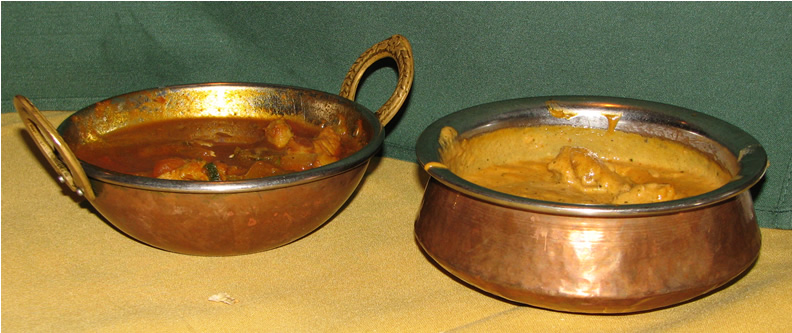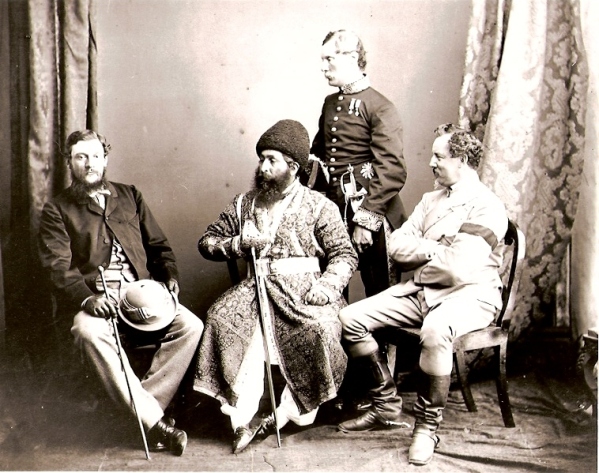|
Nangarhār
Nangarhār (Pashto: ; Dari: ), also called Nangrahar or Ningrahar, is one of the 34 provinces of Afghanistan, located in the eastern part of the country and bordering Logar, Kabul, Laghman and Kunar provinces as well as having an international border with Pakistan. It is divided into 22 districts and has a population of about 1,735,531, the third highest of the country's 34 provinces. The city of Jalalabad is the capital of Nangarhar province. Nangarhar province is famous for its fish and karahi dishes. Etymology Henry George Raverty theorized that the word Nangarhar is derived from the Pashto term ''nang-nahar'' ("nine streams"), which appears in some Persian chronicles. The term supposedly refers to nine streams originating from Safed Koh. However, according to S. H. Hodivala, the name of the province derives from the Sanskrit term Nagarahara, which appears in a 9th-century inscription discovered at Ghosrawa in present-day Bihar, India. ''Nà-jiā-luó-ā'', the Chinese tr ... [...More Info...] [...Related Items...] OR: [Wikipedia] [Google] [Baidu] |
Provinces Of Afghanistan
The provinces of Afghanistan ( ''Wilayah, wilāyat'') are the primary administrative divisions. Afghanistan is divided into 34 provinces. Each province encompasses a number of Districts of Afghanistan, districts or usually over 1,000 villages. Provincial governors played a critical role in the reconstruction of the Afghan state following the creation of the new government under Hamid Karzai. According to international security scholar Dipali Mukhopadhyay, many of the provincial governors of the western-backed government were former warlords who were incorporated into the political system. Provinces of Afghanistan Administrative The following table lists the province, capital, number of districts, UN region, region, ISO 3166-2:AF code and license plate code. Demographic The following table lists the province, population in 2024, area in square kilometers and population density. Regions of Afghanistan The following tables summarize data from the demographic ... [...More Info...] [...Related Items...] OR: [Wikipedia] [Google] [Baidu] |
Karahi
A ''karahi'' is a type of thick, circular, and deep cooking pot, similar in shape to a wok, from Northern South Asia. It is used in Indian cuisine, North Indian, Pakistani cuisine, Pakistani, Afghanistan cuisine, Afghan, Nepalese cuisine, Nepalese, and Caribbean cuisines. Traditionally press-formed from Carbon_steel#Mild_steel, mild steel sheets or made of wrought iron, a ''karahi'' is a wok with steeper sides. Today, they can be made of stainless steel, copper, and Non-stick surface, nonstick surfaces, both round and flat-bottomed, or of traditional materials. The word ''karahi'' emanates from ''karah'', a bigger version of karahi traditionally used in the subcontinent for boiling milk and producing Cream, thick cream. History ''Karahi'' or ''kadahi'' comes from the Prakrit word ''kataha'', which is mentioned in texts like the ''Ramayana'' and Sushruta Samhita, ''Sushruta Samhita'', and derives from Sanskrit ''kataha'' (meaning a frying pan, boiler, cauldron or saucepan). A ka ... [...More Info...] [...Related Items...] OR: [Wikipedia] [Google] [Baidu] |
Buddhists
Buddhism, also known as Buddhadharma and Dharmavinaya, is an Indian religion and philosophical tradition based on teachings attributed to the Buddha, a wandering teacher who lived in the 6th or 5th century BCE. It is the world's fourth-largest religion, with about 500 million followers, known as Buddhists, who comprise four percent of the global population. It arose in the eastern Gangetic plain as a movement in the 5th century BCE, and gradually spread throughout much of Asia. Buddhism has subsequently played a major role in Asian culture and spirituality, eventually spreading to the West in the 20th century. According to tradition, the Buddha instructed his followers in a path of development which leads to awakening and full liberation from '' dukkha'' (). He regarded this path as a Middle Way between extremes such as asceticism or sensual indulgence. Teaching that ''dukkha'' arises alongside attachment or clinging, the Buddha advised meditation practices and ... [...More Info...] [...Related Items...] OR: [Wikipedia] [Google] [Baidu] |
Hinduism
Hinduism () is an Hypernymy and hyponymy, umbrella term for a range of Indian religions, Indian List of religions and spiritual traditions#Indian religions, religious and spiritual traditions (Sampradaya, ''sampradaya''s) that are unified by adherence to the concept of ''dharma'', a Ṛta, cosmic order maintained by its followers through rituals and righteous living, as expounded in the Vedas. The word ''Hindu'' is an exonym, and while Hinduism has been called the oldest religion in the world, it has also been described by the modern term ''Sanātana Dharma'' () emphasizing its eternal nature. ''Vaidika Dharma'' () and ''Arya dharma'' are historical endonyms for Hinduism. Hinduism entails diverse systems of thought, marked by a range of shared Glossary of Hinduism terms, concepts that discuss God in Hinduism, theology, Hindu mythology, mythology, among other topics in Hindu texts, textual sources. Hindu texts have been classified into Śruti () and Smṛti (). The major Hin ... [...More Info...] [...Related Items...] OR: [Wikipedia] [Google] [Baidu] |
Gandhara
Gandhara () was an ancient Indo-Aryan people, Indo-Aryan civilization in present-day northwest Pakistan and northeast Afghanistan. The core of the region of Gandhara was the Peshawar valley, Peshawar (Pushkalawati) and Swat valleys extending as far east as the Pothohar Plateau in Punjab, though the cultural influence of Greater Gandhara extended westwards into the Kabul, Kabul valley in Afghanistan, and northwards up to the Karakoram range. The region was a central location for the Silk Road transmission of Buddhism, spread of Buddhism to Central Asia and East Asia with many Chinese Buddhism, Buddhist pilgrims visiting the region. Between the third century BCE and third century CE, Gandhari language, Gāndhārī, a Middle Indo-Aryan languages, Indo-Aryan language written in the Kharosthi script and linked with the modern Dardic languages, Dardic language family, acted as the lingua franca of the region and through Buddhism, the language spread as far as China based on Gandhār ... [...More Info...] [...Related Items...] OR: [Wikipedia] [Google] [Baidu] |
Achaemenid Empire
The Achaemenid Empire or Achaemenian Empire, also known as the Persian Empire or First Persian Empire (; , , ), was an Iranian peoples, Iranian empire founded by Cyrus the Great of the Achaemenid dynasty in 550 BC. Based in modern-day Iran, it was the List of largest empires#Timeline of largest empires to date, largest empire by that point in history, spanning a total of . The empire spanned from the Balkans and ancient Egypt, Egypt in the west, most of West Asia, the majority of Central Asia to the northeast, and the Indus Basin, Indus Valley of South Asia to the southeast. Around the 7th century BC, the region of Persis in the southwestern portion of the Iranian plateau was settled by the Persians. From Persis, Cyrus rose and defeated the Medes, Median Empire as well as Lydia and the Neo-Babylonian Empire, marking the establishment of a new imperial polity under the Achaemenid dynasty. In the modern era, the Achaemenid Empire has been recognised for its imposition of a succ ... [...More Info...] [...Related Items...] OR: [Wikipedia] [Google] [Baidu] |
Henry Walter Bellew
Henry Walter Bellew MRCP (30 August 1834 – 26 July 1892) was an Indian-born British medical officer who worked in Afghanistan. He wrote several books based on his explorations in the region during the course of his army career and also studied and wrote on the languages and culture of Afghanistan. Life Bellew was born at Nusserabad in India on 30 August 1834, son of Captain Henry Walter Bellew of the Bengal army, assistant quartermaster-general attached to the Kabul army who was killed at Jalalabad in the disastrous retreat of 1842. He joined as a medical student at St. George's Hospital, London in 1852 (where he studied under Caesar Hawkins), and admitted a member of the Royal College of Surgeons of England in 1855. He served in the Crimean War during the winter of 1854–5, and on 14 November 1855 he was gazetted assistant-surgeon in the Bengal medical service, becoming surgeon in 1867, and deputy surgeon-general in 1881. He was with the Bengal Army, assistant surgeon i ... [...More Info...] [...Related Items...] OR: [Wikipedia] [Google] [Baidu] |
Song Dynasty
The Song dynasty ( ) was an Dynasties of China, imperial dynasty of China that ruled from 960 to 1279. The dynasty was founded by Emperor Taizu of Song, who usurped the throne of the Later Zhou dynasty and went on to conquer the rest of the Five Dynasties and Ten Kingdoms period#Ten Kingdoms, Ten Kingdoms, ending the Five Dynasties and Ten Kingdoms period. The Song frequently came into conflict with the contemporaneous Liao dynasty, Liao, Western Xia and Jin dynasty (1115–1234), Jin dynasties in northern China. After retreating to southern China following attacks by the Jin dynasty, the Song was eventually conquered by the Mongol-led Yuan dynasty. The History of the Song dynasty, dynasty's history is divided into two periods: during the Northern Song (; 960–1127), the capital was in the northern city of Bianjing (now Kaifeng) and the dynasty controlled most of what is now East China. The #Southern Song, 1127–1279, Southern Song (; 1127–1279) comprise the period following ... [...More Info...] [...Related Items...] OR: [Wikipedia] [Google] [Baidu] |
Bihar
Bihar ( ) is a states and union territories of India, state in Eastern India. It is the list of states and union territories of India by population, second largest state by population, the List of states and union territories of India by area, 12th largest by area, and the List of Indian states and union territories by GDP, 14th largest by GDP in 2024. Bihar borders Uttar Pradesh to its west, Nepal to the north, the northern part of West Bengal to the east, and Jharkhand to the south. Bihar is split by the river Ganges, which flows from west to east. On 15 November 2000, a large chunk of southern Bihar was ceded to form the new state of Jharkhand. Around 11.27% of Bihar's population live in urban areas as per a 2020 report. Additionally, almost 58% of Bihari people, Biharis are below the age of 25, giving Bihar the highest proportion of young people of any Indian state. The official language is Hindi, which shares official status alongside that of Urdu. The main native languag ... [...More Info...] [...Related Items...] OR: [Wikipedia] [Google] [Baidu] |
Nagarahara
Nagara (), also known as Dionysopolis (), was an ancient city in the northwest part of ("India within the Ganges"), distinguished in Ptolemy by the title 'also Dionysopolis'. It also appears in sources as Nagarahara, and was situated between the Kabul River and the Indus, in present-day Afghanistan. The site of Nagara is usually associated with a large stupa called Nagara Ghundi, about west of Jalalabad near Tepe Khwaja Lahori, south of the junction of the Surkhäb and Kabul rivers, where ancient ruins have been found. Dionysopolis and Nysa From the second name which Ptolemy has preserved, Dionysopolis, we are led to believe that this is the same place as Nysa () or Nyssa (), which, according to ancient historians, was spared from plunder and destruction by Alexander the Great because the inhabitants asserted that it had been founded by Dionysus, when he conquered the area and he named the city Nysa and the land Nysaea () after his nurse and also he named the mountai ... [...More Info...] [...Related Items...] OR: [Wikipedia] [Google] [Baidu] |
Safed Koh
The Spīn GharSafīd Mountain Range in , 2009 () or Safēd Kōh (, less used in this area) both meaning ''White Mountain'', or sometimes (: Selseleh-ye Safīd Kūh) meaning ''white mountain range'', is a to the south of the . I ... [...More Info...] [...Related Items...] OR: [Wikipedia] [Google] [Baidu] |









